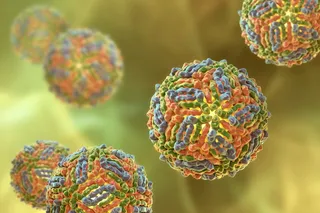Scientists have done a ton to fight this pandemic. And they haven’t been working alone: They’ve had helpers. Some scientists have even had the privilege of having thousands of helpers. Citizen scientists faithfully logging their health status, answering surveys and playing games that help researchers learn more about everything from public health to how mRNA works. Here’s a run-down of citizen science projects helping to fight COVID-19, and what they’ve already accomplished.
It only takes a few seconds on the Outbreaks Near Me website to report whether you’re feeling healthy or sick. Even that simple question gives researchers a surprising amount of information on COVID-19’s spread. The data they’re collecting from volunteers across North America is already being used by a wide variety of health departments, researchers, and even the CDC.
Outbreaks Near Me evolved from two separate, related, projects: Flu Near You and COVID Near You. It officially launched ...














